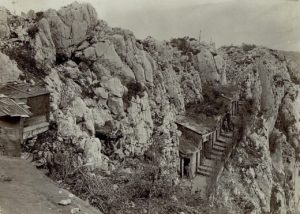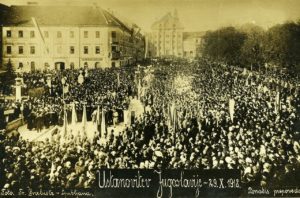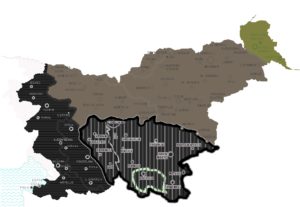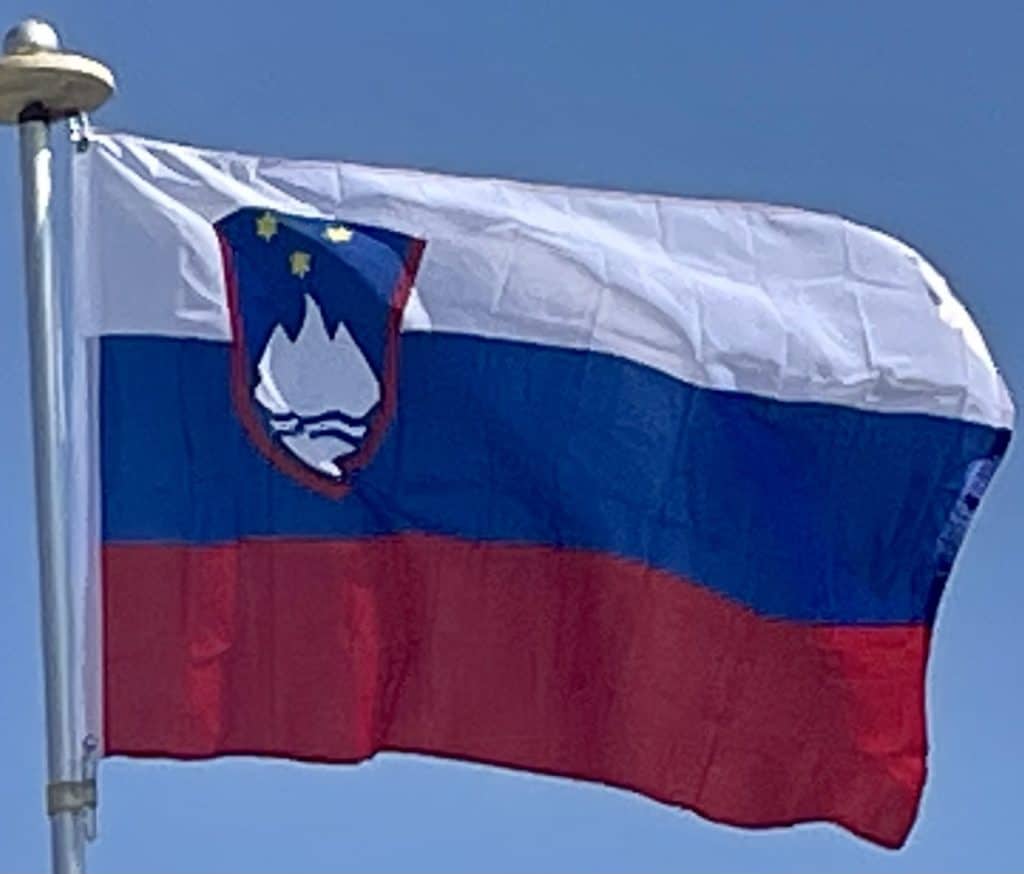
Hundreds of thousands of Slovenes from Princely County of Gorizia and Gradisca were resettled in refugee camps in Italy and Austria. While the refugees in Austria received decent treatment, the Slovene refugees in Italian camps were treated as state enemies, and several thousand died of malnutrition and diseases between 1915 and 1918. Entire areas of the Slovene Littoral were destroyed.
Kingdom of Serbs, Croats, and Slovenes (later the Kingdom of Yugoslavia):
The Slovene People’s Party launched a movement for self-determination, demanding the creation of a semi-independent South Slavic state under Habsburg rule. The proposal was picked up by most Slovene parties, and a mass mobilization of Slovene civil society, known as the Declaration Movement, followed. This demand was rejected by the Austrian political elites; but following the dissolution of the Austro-Hungarian Empire in the aftermath of the First World War, the National Council of Slovenes, Croats and Serbs took power in Zagreb on 6 October 1918. On 29 October, independence was declared by a national gathering in Ljubljana, and by the Croatian parliament, declaring the establishment of the new State of Slovenes, Croats, and Serbs.

On 1 December 1918, the State of Slovenes, Croats and Serbs merged with Serbia, becoming part of the new Kingdom of Serbs, Croats, and Slovenes; in 1929 it was renamed the Kingdom of Yugoslavia. The main territory of Slovenia, being the most industrialized and westernized compared to other less developed parts of Yugoslavia, became the main center of industrial production.
Following a plebiscite in October 1920, the Slovene-speaking southern Carinthia was ceded to Austria. With the Treaty of Trianon, on the other hand, the Kingdom of Yugoslavia was awarded the Slovene-inhabited Prekmurje region, formerly part of Austro-Hungary.
World War II:
Slovenia was the only present-day European nation that was trisected and completely annexed into both Nazi Germany and Fascist Italy during World War II. In addition, the Prekmurje region in the east was annexed to Hungary, and some villages in the Lower Sava Valley were incorporated in the newly created Nazi puppet Independent State of Croatia (NDH).

Axis forces invaded Yugoslavia in April 1941 and defeated the country in a few weeks. The southern part, including Ljubljana, was annexed to Italy, while the Nazis took over the northern and eastern parts of the country.
After the resistance started in summer 1941, Italian violence against the Slovene civilian population escalated, as well. The Italian authorities deported some 25,000 people to the concentration camps, which equaled 7.5% of the population of their occupation zone. The most infamous ones were Rab and Gonars. The anti-Nazi resistance expanded, creating its own administrative structures as the basis for Slovene statehood within a new, federal and socialist Yugoslavia.
In 1945, Yugoslavia was liberated by the partisan resistance and soon became a socialist federation known as the People’s Federal Republic of Yugoslavia. Slovenia joined the federation as a constituent republic, led by its own pro-Communist leadership.
Socialist Period:
Following the re-establishment of Yugoslavia during World War II, Slovenia became part of Federal Yugoslavia. A socialist state was established, but because of the Tito–Stalin split in 1948, economic and personal freedoms were broader than in the Eastern Bloc countries.
